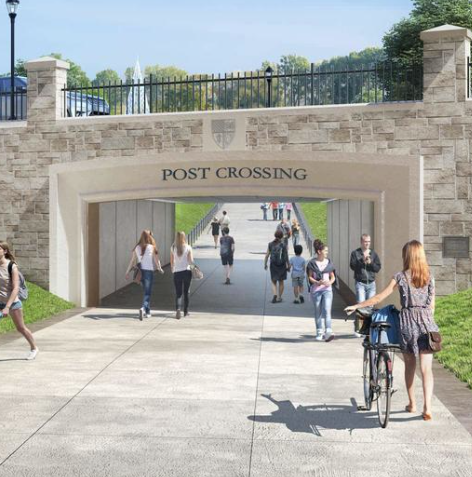As cities and towns across the globe face the challenge of maintaining aging infrastructure, one of the most pressing issues is deteriorating water and sewer pipes. Traditional methods of replacing old, corroded pipes can be costly, disruptive, and time-consuming. However, a smarter and more efficient solution has emerged: pipe lining. Pipe lining technology offers a trenchless method for rehabilitating aging pipes without the need for extensive excavation. In this article, we explore why pipe lining is becoming the go-to strategy for repairing aging infrastructure, its benefits, and how it works.
What is Pipe Lining?
Pipe lining, also known as trenchless pipe rehabilitation or cured-in-place pipe (CIPP) lining, is a method used to repair damaged or deteriorating pipes without the need for digging up the ground or tearing down structures. It involves inserting a flexible liner into the existing pipe, which is then inflated and cured to create a strong, durable, and seamless new pipe inside the old one.
The process can be used on a wide range of pipe materials, including cast iron, clay, PVC, and concrete, and is ideal for both water and sewer pipes. The new liner restores the pipe’s integrity, improves flow efficiency, and helps prevent leaks and future damage.
Why Pipe Lining is a Smarter Repair Strategy
There are several reasons why pipe lining has become the preferred method for repairing aging infrastructure, especially when compared to traditional pipe replacement. Below are some of the key advantages of pipe lining:
1. Cost-Effective
Traditional pipe replacement involves digging up the ground, removing old pipes, and installing new ones. This can be an expensive process, especially in urban areas where roads, buildings, or landscaping need to be disrupted and repaired. Pipe lining, on the other hand, requires minimal excavation, significantly reducing labor and material costs. Because it’s a more efficient process, it also helps save money on restoring any surfaces disturbed during the repair.
In addition, pipe lining eliminates the need for costly trenching, which reduces both the immediate expense of the repair and the long-term costs associated with restoring the landscape, roads, or sidewalks that were dug up for replacement.
2. Minimal Disruption
One of the biggest advantages of pipe lining is the minimal disruption it causes to the surrounding area. Traditional pipe replacement can involve tearing up roads, sidewalks, or even private property, disrupting daily life for residents and businesses. It can also result in traffic delays and noise, leading to significant inconvenience for the community.
Pipe lining, however, is a trenchless method, meaning that the process requires little to no digging. Contractors access the damaged pipe through small access points or manholes, meaning roads and buildings remain intact, and there’s no need for major excavation. This makes pipe lining an ideal solution for urban environments, where disruption to infrastructure and the community can be particularly costly.
3. Long-Lasting Results
Pipe lining is designed to create a pipe within a pipe that’s strong, durable, and resistant to future wear and tear. The cured-in-place liner is made from materials such as epoxy resin or polyester, which are resistant to corrosion, chemicals, and root intrusion. Once the liner is cured, it forms a smooth, seamless surface inside the old pipe, restoring its function for many years.
The result is a pipe that is both structurally sound and long-lasting. This makes pipe lining a smarter repair strategy, as it often provides a more durable solution than traditional pipe replacement, reducing the need for future repairs and maintenance.
4. Faster Turnaround Time
Traditional pipe replacement can take weeks or even months, depending on the size of the project and the complexity of the infrastructure. The process often requires permits, extensive digging, and lengthy planning and scheduling.
In contrast, pipe lining is typically much faster. The entire process can be completed in a fraction of the time it takes to replace pipes, with many projects being completed in just a few days. For municipalities, this means that water or sewer service disruptions are minimized, and residents and businesses experience less downtime.
5. Environmentally Friendly
Pipe lining is a more environmentally friendly alternative to traditional pipe replacement. Since the process requires minimal excavation, it reduces the environmental impact of digging up large sections of land. In addition, pipe lining uses fewer raw materials, as it rehabilitates the existing pipes rather than removing and replacing them entirely.
The materials used in pipe lining, such as epoxy resin, are often non-toxic and durable, helping to reduce the risk of environmental contamination. As municipalities continue to focus on sustainability, pipe lining offers a green solution for repairing aging infrastructure without causing further environmental damage.
6. Improved Water Flow and Efficiency
Over time, old pipes can become clogged with sediment, debris, or corrosion, which restricts water flow and reduces the efficiency of the system. Pipe lining helps restore the pipes to their original function by providing a smooth, clean surface inside the old pipe, which improves water flow and efficiency. The seamless nature of the lining also prevents future blockages and reduces the risk of leaks.
In addition, the new pipe created by the lining process is often more efficient than the old one, providing better performance and minimizing the risk of future repairs or breakdowns.
How Does Pipe Lining Work?
The pipe lining process typically involves the following steps:
- Inspection: The contractor conducts an inspection of the existing pipes using video cameras to assess the condition and locate the damage. This allows them to determine if pipe lining is a viable solution.
- Cleaning: The pipes are thoroughly cleaned to remove debris, scale, and other materials that could interfere with the lining process. This step is essential for ensuring a smooth, tight fit for the new lining.
- Liner Insertion: A flexible liner is saturated with resin and inserted into the existing pipe. The liner is then inflated and positioned correctly within the damaged pipe.
- Curing: The liner is cured using hot water or UV light, hardening the resin and bonding the liner to the inner walls of the pipe, creating a new, durable pipe inside the old one.
- Final Inspection: After curing, a final inspection is conducted to ensure that the lining is properly installed and the pipe is functioning as expected.
Pipe lining for aging infrastructure is quickly becoming the preferred method for repairing deteriorating pipes. This trenchless technology offers a cost-effective, minimally disruptive, and environmentally friendly solution to the challenges of maintaining and rehabilitating old water and sewer systems. With its durability, speed, and long-lasting results, pipe lining represents a smarter, more efficient way to address the growing issue of aging infrastructure in communities worldwide. Whether for municipalities or private property owners, pipe lining is a reliable and sustainable choice for ensuring the continued functionality of essential systems.


